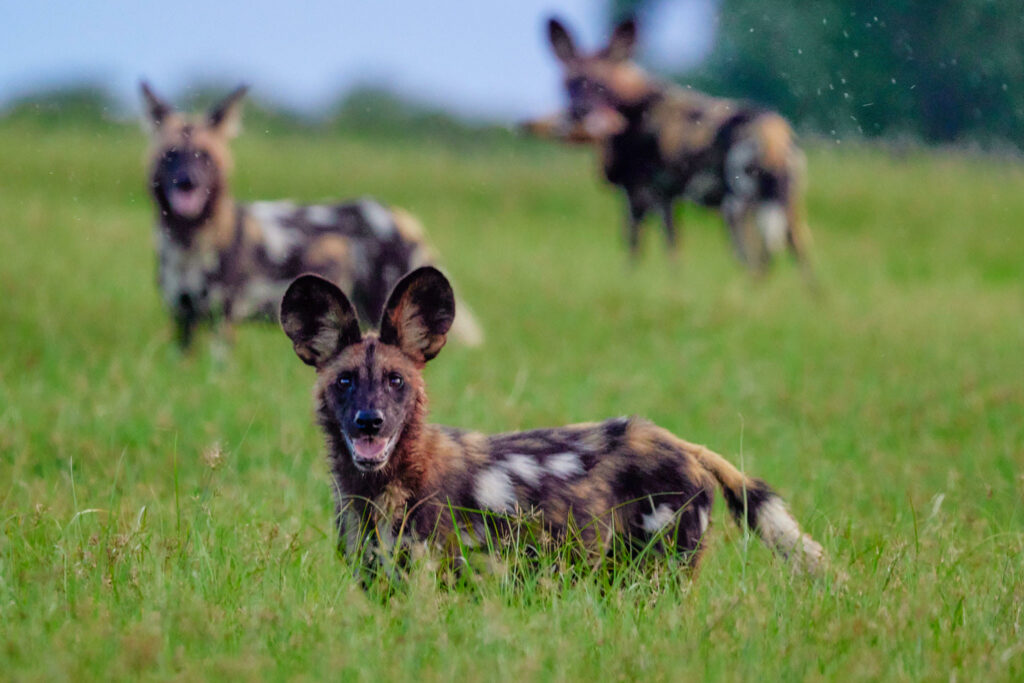With 26 known denning packs and over 400 dogs, the Zambia Carnivore Programme has had its work cut for it this denning season. Wild dogs generally give put in around May and June and raise their pups in secluded dens until around September and October. 2023 seems to have been a bumper year as packs continue their resurgence across the country. The ZCP monitors dens, assigns identification numbers and counts pups, as well as working with law enforcement to protect dog from snares.
(Did you know that their telltale mottled markings are all completely unique and that you can often tell one dog from another by characteristic white flecks on their tales? These highly individual coats allow researchers to assign numbers to each painted dog, making it easier to track their lifecycles).
Wild Dog 73’s Legacy Lives On
The ZCP is also thrilled about South Luangwa’s Puku Plain pack, a new group who had their first litter in 2023. The newborns are the great-great grandpuppies of one of Zambia’s most famous wild dogs known as ‘Wild Dog 73’. He was the oldest known recorded wild dog in natural systems but was caught in a brutal snare in 2014. After being rescued in a joint operation by ZCP and the Department of National Parks and Wildlife, he survived and went onto sire other dogs that now form South Luangwa’s latest family! This is a prime example of why it is always worth saving a single animal.
Wild Dog 73 was the alpha of the Hot Springs pack and is believed to have been born in 2006, making him around 12 when he died in 2018, four years after being desnared. From successfully leading the Hot Springs pack, his legacy includes:
- About 17 other packs that formed from dispersed offspring
- At least 272 known pups, grandpups, great grandpups and great-great grandpuppies (the newborns of the Puku Plain pack)
- Links to packs that have repopulated the Luangwa Valley

When is the Best Chance of Seeing African Wild Dogs in Zambia?
Unlike other carnivores, wild dogs are highly seasonal breeders. They generally return to the same dens every year just after the impala rut in about May or June, unless those dens have been occupied by hyena, honey badger, porcupines or other wildlife.
It is highly unlikely there will be a lot of dog activity for the three months that they den as they have to protect their pups from marauding lions and other predators. This means that safari high season of July and August is generally not great for wild dog sightings. But patience pays off as by September and October, packs are usually much more active, with puppies emerging and beginning to play and learn hunting and communication skills. By November, they have generally emerged in full to take advantage of newborn plains game that are dropping young to coincide with he fresh grazing spring up after the first spring rains.
Kafue, South Luangwa, North Luangwa and Lower Zambezi are all fantastic options to spot painted dogs.
PHOTOS Konkamoya Lodge in Kafue National Park

Leave A Comment